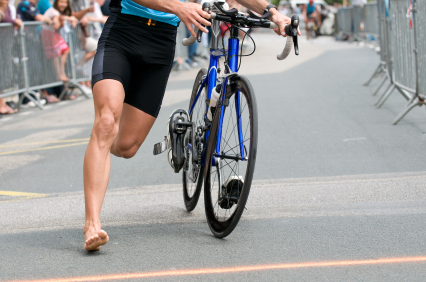In a recent article for MomsTEAM, sports nutrition expert Nancy Clark discussed the subject of over-hydration (hyponatremia) and offers advice on the treatment of the condition.

As someone familiar with the research on hyponatremia, I believe that, overall, Clark did a great job in covering the issue, but there are several additional points worth raising to provide additional perspective:
- Just as an athlete can be mildly dehydrated (body fluid loss of 1 to 2%) and have no major symptoms or issues, the same is true with respect to low sodium: an athlete can have mild levels of hyponatremia and not show symptoms. The key is always to avoid the extremes of dehydration (under-hydration) and hyponatremia (over-hydration);
- Clark's comment that an athlete's body can deal with transient dehydration lasting from 4 to 8 is true, but it is important to point out that moderate to severe dehydration (4-10% body fluid loss) is not good for the adult body, let alone the youth and adolescent body, during a transient time frame. Moderate to severe dehydration is of particular concern for high school male athletes in football or soccer who sweat at a high rate; they should be encouraged to replace their fluid losses prior to returning to practice;
- It is also important to remember that chronic dehydration doesn't just effect the elderly; it is a concern for kids too. In the studies we conducted a number of years ago at the University of Connecticut of athletes at summer sports camp, 50 to 75% of youth and adolescents remained mildly but chronically dehydrated the entire time they were at camp;
- I agree that thirst is a powerful fluid regulator, even though preliminary research suggests that a youth's perception of thirst is not a good indicator of dehydration. In my view, the most likely explanation for this apparent discrepancy is that the thirst mechanism works just fine for both kids and adults, but that the difference may be that children are more distracted and excited while participating in physical activity outside and simply don't pay attention to thirst. Adults can become dehydrated for the same reason: our thirst mechanism works just fine, and if we drink fluids when we become thirsty, we'd be able to keep up with our fluid losses. However, just like children, adults can become distracted or excited during competition/exercise and therefore don't pay attention.
- Like the majority of hydration researchers, I believe that exercise-induced muscle cramps result from a multitude of factors, and I doubt there is just one cause for them. There is a great deal we do not know about what causes cramps; the reason being that it is a topic that is very difficult to study because it is hard to cause cramps in a lab setting and it's hard to study them in the field as well. As a result, all we can tell is that fatigue, electrolyte imbalances, dehydration, and nerve endings all seem to play a role.
- As for the advice of some experts about treating heat syncope (collapsing at the finish line of an endurance event) by quickly raising the athlete's feet and pelvis above the level of their heart, my advice is to start by removing the person safely from the situation, and then placing them in a position of comfort, whether that is laying down with feel elevated or sitting with the feet off the ground. There is very little research to indicate that the recovery position he recommends aids significantly in venous blood flow return. If it is determined the person is dehydrated and not hyponatremic, oral fluids should be sipped.








